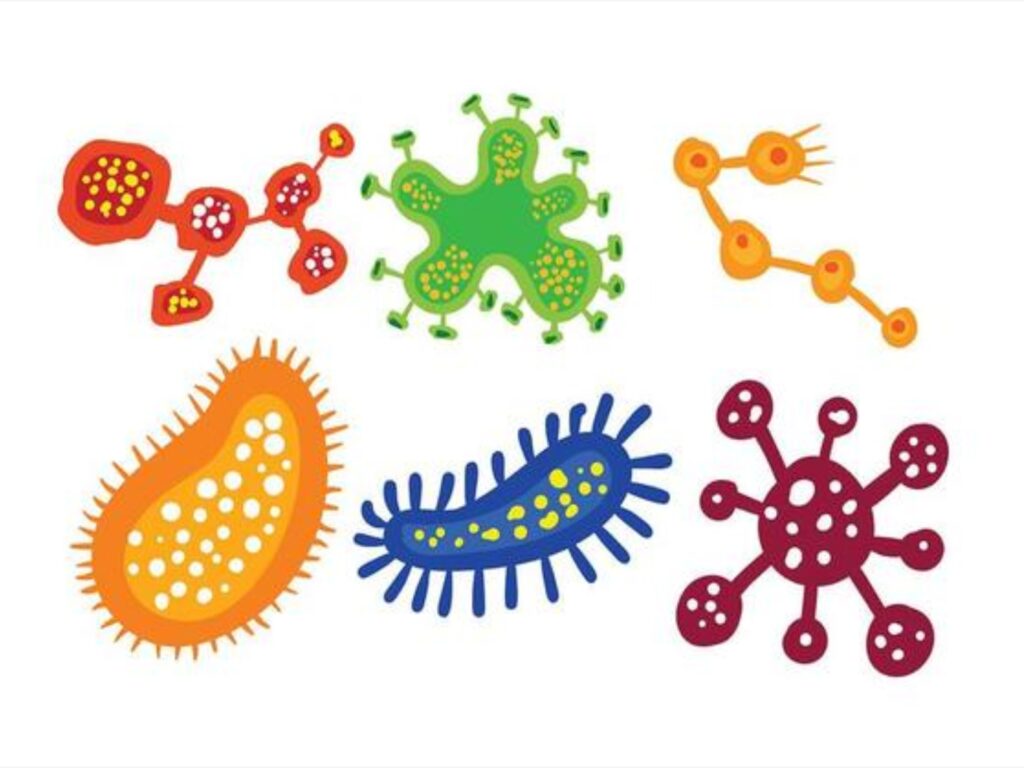Disease causing microorganisms are called pathogens.Pathogens are biological agents that can be bacteria, viruses, fungi, protozoa, parasites, worms, or prions. They disrupt the normal processes of the body to cause disease.
Explained:
Viruses:- are stray wisps of RNA or DNA in a protective shell. They have no separate life: they live and reproduce only by being swept up into a host organism, when the shell pierces the skin of a cell and injects the DNA or RNA into the infected cell, where it uses the host cell’s mechanisms to make copies of itself.
Bacteria:- Bacteria are a type of pathogen that can cause disease.
fungi:- fungi are a type of pathogen that can cause disease.
protozoa:- protozoa are a type of pathogen that can cause disease.
parasites:- parasites are a type of pathogen that can cause disease.
worms:- worms are a type of pathogen that can cause disease.
prions:- prions are a type of pathogen that can cause disease.

Pathogenic bacteria have certain genes and characteristics that endow them with the capacity to cause disease. Nonpathogenic bacteria lack these characteristics.
One important characteristic is the capacity to adhere to tissues. A pathogen must do this in order to avoid removal from the body by the flow of fluids (tears, urine, mucus). So pathogens have adhesions that bind to cells.
Pathogens can also invade. For example, some intestinal pathogens can induce epithelial cells in the gut to endocytose them. So the pathogen now resides inside the human cell.
Pathogens can resist phagocytosis. A primary defense mechanism of the body is the capacity to engulf and destroy pathogens inside the vesicles of macrophages and polys. A good pathogen can resist this process by using a slick capsule, leucocidins, and other antiphagocytic mechanisms.
Toxins are produced by pathogens. These toxins either kill human cells (i.e., diphtheria toxin) or alter cellular function so that the body suffers (cholera toxin, tetanus toxin). Sometimes the pathogen will actually inject the toxin into host cells with tiny needle like structures that the bacteria can produce. (It is kind of creepy.)
A special kind of bacteria, said to be gram negative, is covered with a toxic compound called endotoxin. It causes fever, inflammation and disseminated intravascular coagulation. (This means the blood clots all over your body. Very bad!)
Next, are the tissue dissolving enzymes. Some pathogens like to spread, so they release enzymes that breakdown your connective tissue. Now, the pathogen can move through your tissues more easily. (Streptococcus pyogenes, Clostridium perfringens)
I hope this gives you some idea about the differences between pathogens and non- pathogens. It is a fascinating field of study.

